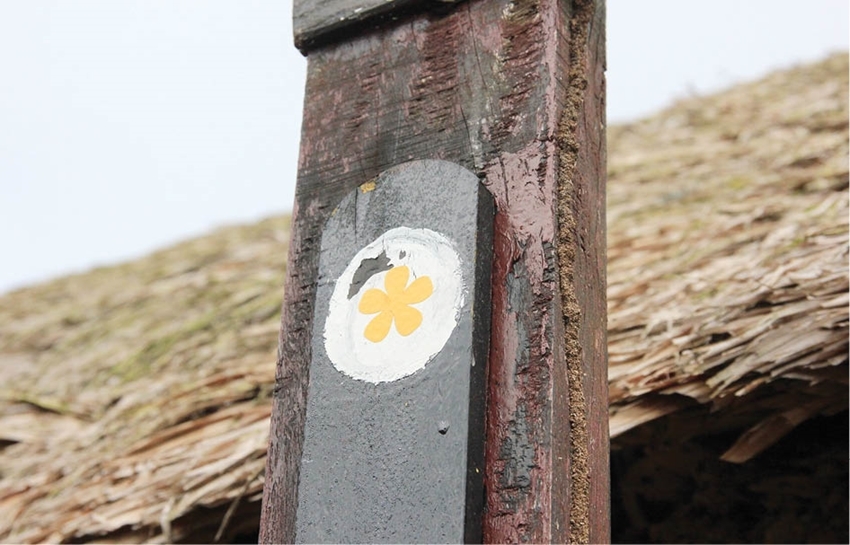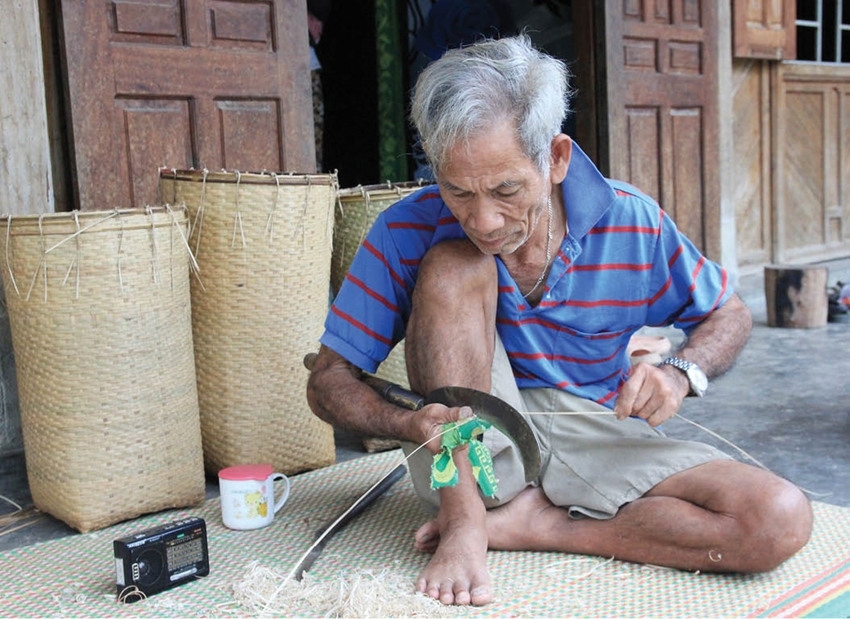When visiting A Nam village in Hong Van commune, A Luoi district, Thua Thien Hue province, tourists will have the chance to admire the only longhouse built with the traditional style of the Pa Co people. In 2014, the longhouse was constructed thanks to the advocacy of weaving artisan Quynh Quyen, a villager of A Nam, and it has since become a symbol of solidarity among the villagers.

The A Nam Village Longhouse - A Symbol of Unity for the Pa Co People
A unique architecture
It has an architecture quite similar to stilt houses, however, the long house of A Nam village is designed with an exceptional length compared to the houses I have seen before. The person known as the “living dictionary” of A Luoi highland culture - village Elder and outstanding artisan Ho Van Hanh, a resident of A Nieng Le Trieng village, Trung Son commune, said that the house was considered the standard model of traditional long houses of the Pa Co people, called “đung moong”. “The long house had been lost for nearly half a century until this house appeared. The construction of A Nam’s đung moong has contributed to reviving the traditional values of our people...,” excitedly said Elder Hanh.
Taking me on a tour around the long house, Elder Quynh Quyen introduced: “The house is made entirely of wood with a design of 5 compartments, 35 meters long and has three entrances with staircases. The main pillars of the house are about ten meters high, so the floor is quite high above the ground. The roof is thatched with rattan leaves. This type of leaf is quite rare, only found deep in the forest. Thatching with rattan leaves is more beautiful than with grass. On the ridge are wooden decorations in the shape of buffalo horns along with patterns and motifs characteristic of the Pa Co people. Historically, just by looking at houses like this, one could tell how many stoves a family had, representing the number of households of descendants and relatives living together. From this, people also knew how prosperous this family was.”

Wooden decorations in the shape of buffalo horns along with patterns and motifs characteristic of the Pa Co people
About 60 years ago, along this Truong Son range, the đung moong architecture was still quite common. “Around the 1960s, the last long houses of the Pa Co people were gradually destroyed due to war. In ancient times, the long house was where households of an extended family lived together to work and share joys and sorrows... The houses usually had 5-7 compartments, but some were up to 12 compartments long, corresponding to 12 stoves representing 12 families of grandparents, children, grandchildren... with over 100 people living together. This is where my family and relatives used to live, so I remember it very clearly,” recounted Elder Quynh Quyen.
Today, tiled-roof houses are gradually replacing the traditional old houses. Worried that the traditional long houses of the Pa Co people would be gradually forgotten, Elder Quynh Quyen always pondered about building a long house with ancient architecture. So day and night, he tried to mobilize people in the village, some contributing labor, others contributing resources, to revive the traditional values of their people.
A symbol of unity
If the long house in history represents the gathering of an extended family, then A Nam’s long house symbolizes solidarity among the villagers. Interestingly, when mentioning the long house, it was initially built with only 5 compartments. Over time, the house would be expanded with more compartments as people in the house got married, meaning the house had more new members.

Elder Quynh Quyen
Addressing the inconveniences of living with 12 households and 100 people in one house, Elder Quynh Quyen smiled: “It was indeed very crowded, but the family atmosphere was always harmonious and cheerful. The work in the fields, kitchen, hunting... was divided among each household and member. For small tasks or big ones, the whole family would join hands to finish them quickly. It was cozy and extremely united.” It was for this reason that Elder Quynh Quyen was determined to reconstruct the long house to remember a time that, although difficult, was full of family affection.
In 2012, Elder Quynh Quyen proposed the idea to the commune leaders and received their approval. However, building the house required a lot of funding and effort from all the villagers. Elder Quynh Quyen actively engaged in community outreach, “going to every alley, knocking on every door” to call for villagers to contribute money and effort... He said that during that time, he couldn’t sleep well at night because he was busy calculating materials and costs..., and thinking about how to design the house to be as close to the original as possible. The happiest thing was that, thanks to his reputation in the village, he quickly mobilized tens of millions of dong initially to start construction.
“240 households in A Nam at that time all supported me in building this common project for the village. Those who had little contributed little, those who had more contributed more, even those working far away also donated money to help me build the long house for the village,” recounted Elder Quynh Quyen. From this funding, he asked the village men to buy and gradually stockpile wood. After completing the frame, what should be used to thatch the long house appropriately? That was a question that elder Quynh Quyen always pondered because using metal sheets would be durable but would “deform” the traditional structure. So he found ways to continue mobilizing people to go into the forest to find rattan leaves until they had enough 5,000 pairs of rattan for thatching.
Because the house was built by “amateur carpenters and sculptors” who were young men in the village, he had to supervise very carefully to ensure that the details of the house were both beautiful and following standards. As for the reliefs, decorative patterns, and stairs... which required high artistic skills, he carved them himself. Careful and meticulous in every joint and small detail, it took over a year of construction before the long house with ancient architecture stood majestically amidst the mountains of A Nam, fulfilling Elder Quynh Quyen’s wish.
On the night of the inauguration celebration, A Nam’s long house was lively with traditional dances flourishing along with the sound of gongs, and Elder Quynh Quyen’s eyes were filled with tears. His last wish in life had finally been realized. He was happy because after a difficult period of construction..., the only long house in A Luoi district had magnificently risen through the unity and solidarity of the people. Even more joyful was that from now on, the people of A Nam village had a place for cultural activities, performances, organizing important events, and something to be proud of and to tell visitors from all over when they come to visit and learn.
As for Mrs. Ta Dur Tu, Deputy Head of the Department of Culture and Information of A Luoi district, the existence of the only traditional long house in A Nam village was partly thanks to Elder Quynh Quyen’s mobilization efforts. Now, Elder Quynh Quyen hosts festivals and important events of the village such as Arieu Ca, Aza Koonh..., right in this long house. Despite his age, Elder Quynh Quyen is still enthusiastic about participating in and advising on major festivals and events in A Luoi district. It was also thanks to him that the Aza Koonh festival of the Pa Co people was recognized as a National Intangible Cultural Heritage in 2019.
“At present, we are proposing to the district People’s Committee to facilitate the restoration of various parts of the long house. Not only is it a symbol of unity for the Pa Co people, but the long house of A Nam village is also a symbol of the beautiful culture of the highland people in A Luoi district,” informed Mrs. Tu.
Story and photos: Thai Chau